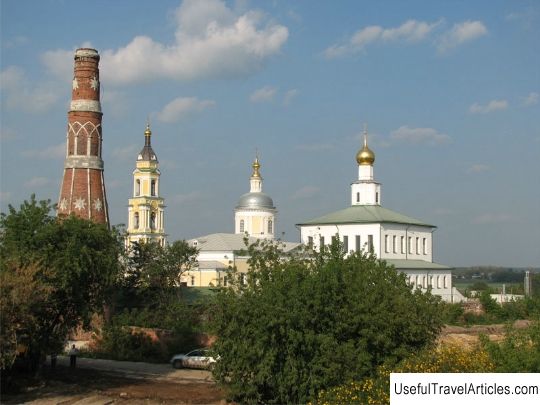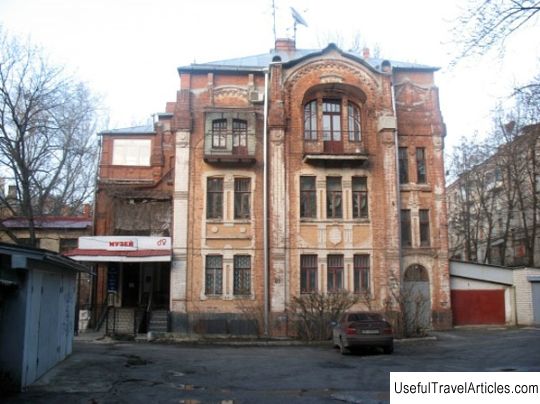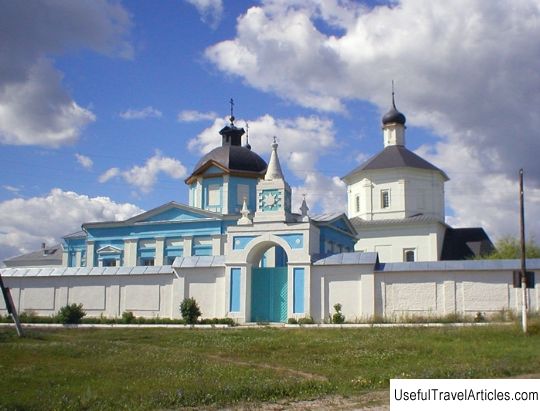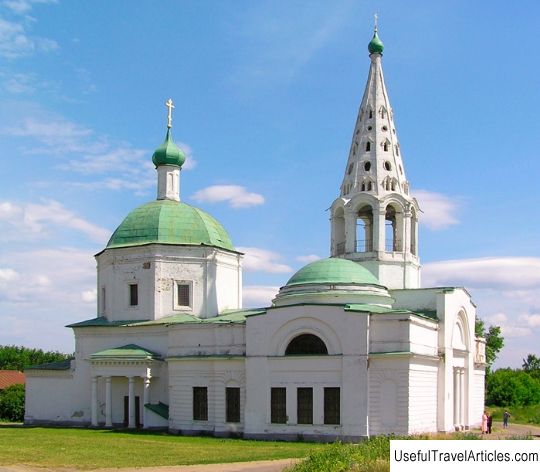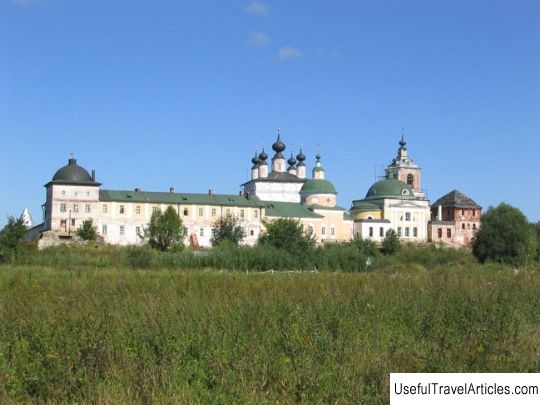Kolomna Kremlin description and photos - Russia - Moscow region: Kolomna
Rating: 8,3/10 (788 votes) 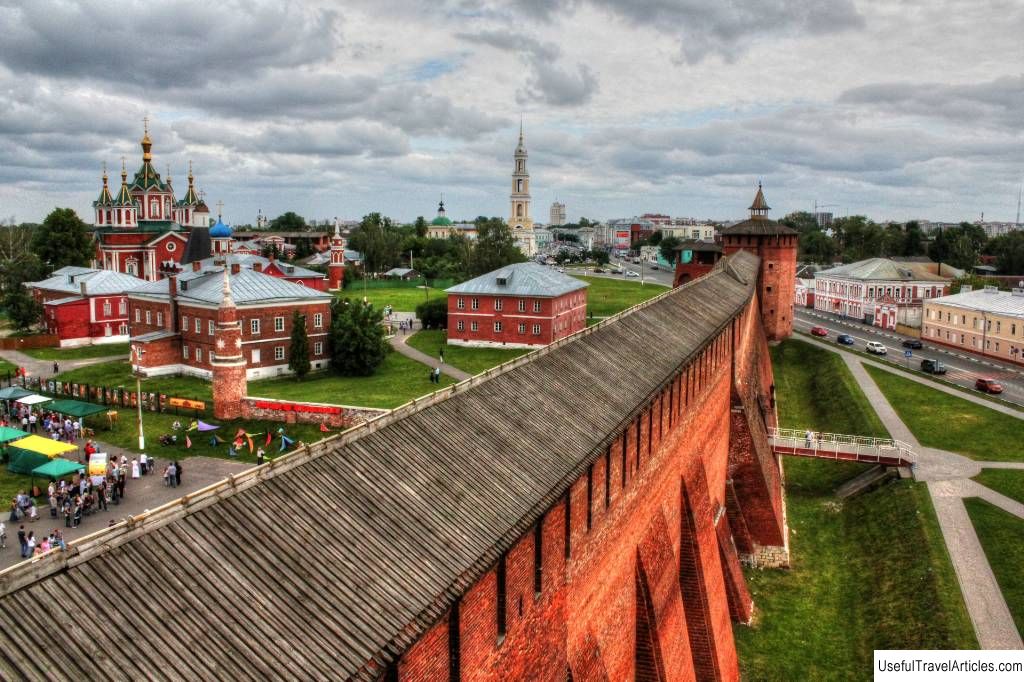
Kolomna Kremlin description and photos - Russia - Moscow region: Kolomna. Detailed information about the attraction. Description, photos and a map showing the nearest significant objects. Photo and descriptionKolomna Kremlin is one of the largest in the Moscow region. Here you can see not only the remains of an ancient fortress, but many temples, old city buildings, and visit several museums and exhibition complexes. FortressThe conditional date of the foundation of Kolomna is considered to be the first chronicle mention in 1177 . By that time, the city already existed and was a small frontier fortress on the border of the Ryazan lands. Since 1301, the city became part of the Moscow principality. The flourishing of Kolomna is associated with the name of Dmitry Donskoy - he renovated the fortress and laid the stone Assumption Cathedral here. The main city shrine was the Don Icon of the Virgin . It was here that Prince Dmitry gathered his troops before the Battle of Kulikovo. In 2007, an equestrian monument to Dmitry Donskoy was erected in front of the Mikhailovsky Gates of the Kremlin. Its total height together with the pedestal is 12 meters. When, after another raid of the Horde, the wooden Kremlin burned down, Vasily III ordered to build a stone one along the same perimeter. This was in 1525-1531. Most likely, the fortress in Kolomna was built by the same Italian craftsmen who had previously built the Moscow Kremlin. In any case, its walls have exactly the same dovetail battlements, multifaceted towers and other similar details. In total there were 16 towers and three gates. By the 18th century, like other southern fortresses, the Kremlin lost its strategic importance and began to decay. Locals were quietly dismantling it for their own needs - and thus dismantled a significant part of the walls and nine towers. Only in 1826, Nicholas I , who had just come to power, issued a decree on the preservation of the historical heritage. Several sections of the walls and seven towers have survived to this day. The most famous tower is “ Marina ”. According to the city legend, the adventurer and wife of False Dmitry Marina Mnishek was imprisoned here. It was she who once let the Poles into the city. It is the tallest of the surviving towers - 31 meters and 8 floors. Marina Mnishek died in captivity, but legends say that she turned into a crow and still continues to circle over the tower. In Soviet times, it was here that the local history museum was located, but now it is closed to visitors. Cathedral Square Assumption Cathedral in the center of the city was laid by Prince Dmitry Donskoy in 1379 . The modern temple on this site was built at the end of the 17th century, but it continues the traditions of the ancient Russian architecture. In those years, a belfry was erected over the nearby St. Nicholas Church. It was built in 1692, was rebuilt several times and was returned to its original appearance during the restoration process in the 1960s. The temple was closed in 1929. Before its closure, Dmitry Vdovin, a native of the Kolomna merchants, was the church elder. He died in 1942 in the camps and is now glorified as a new martyr. The temple was returned to the church in 1989, and in the 1990s. was restored. Resurrection Church , according to legend, was once a prince and was located on the territory of the palace of Dmitry Donskoy. The building got its modern look in the late 18th and early 19th centuries. In the 19th century, it was a favorite temple of Kolomna merchants who took care of it and richly decorated it. In 1929, it was closed along with the Assumption Cathedral, the bell tower and dome were destroyed. The church was restored in the 2000s. Tikhvin Church , “warm” - heated, unlike the cold Assumption Cathedral, was built by Kolomna merchants at the end of the 18th century and rebuilt in the 19th century. After the church was closed, its domes were destroyed and restored already in the process of restoration of the XXI century. Church of St. Nicholas Gostiny 1501 - one of the first brick, not stone, churches in the Moscow region. They say that the local merchants agreed with the priest that their service would begin an hour earlier, so that after it the shops would be opened an hour earlier than everyone else. Once the temple had a bell tower and five domes, but in the thirties all of this was destroyed. The classicist Holy Cross Church was once located on the busiest shopping street of the Kremlin. It was built in 1762 and remodeled in 1837. The bell tower was destroyed in the 1930s. and restored in the 1990s. Dormition Brusensky Monastery The monastery was founded in 1552 by Ivan the Terrible in memory of the capture of Kazan. The small one-domed Assumption Church from the middle of the 16th century reminds of this. The church was rebuilt at the end of the 19th century, but the restoration of the 1970s. returned her to her original form. The name "Brusensky", according to legend, came from the fact that all the other buildings of the monastery were then made of timber. In the monastery itself, one of the first copies of the Kazan icon of the Mother of God is revered as miraculous. The second cathedral of the monastery - Holy Cross - was built in 1852-1855 by architect A. Kutepov. The elegant red and white building combines elements of the classic and old Russian style. Initially, the monastery was male, in the 19th century it became female. It was closed in 1919 - and then some of the nuns moved to the nearby Resurrection Church. In the thirties, they began to be expelled and shot. Now five nuns of this monastery have been canonized as new martyrs. The monastery was revived in 1997. Holy Trinity New Golutvin Monastery This monastery was founded in the 19th century. It is called "Novo-Golutvin", in contrast to the Staro-Golutvin monastery on the outskirts of the city. Trinity Cathedral of the 17th century was transferred to him. Before that, the residence of the Kolomna bishops was located here. From it have survived the white-stone episcopal chambers of the 16th century, the bishop's house and the Pokrovskaya church of the 18th century. The Gothic look and final design of this entire complex was given in the middle of the 18th century by the architect M. Kazakov. Interesting is not so much the history of this monastery, as its various modern activities. At the monastery there is a medical center. Ksenia of Peterburgskaya - there are professional doctors among the nuns who have not abandoned their medical practice. The most beautiful interior decoration of the temples was created by the hands of the nuns themselves. One of the "specializations" of the monastery is embroidery . All churches here are decorated with embroidered icons and handmade wood carvings. At the monastery there is a unique dog nursery , which breeds huge guard dogs: Alabai and Buryat-Mongolian wolfhounds, and also lives in the monastery camel named Sinai. At their farmstead near Kolomna, the nuns breed Vyatka horses - once it was the most popular "post" breed in Russia. Kremlin Museums The territory of the Kremlin occupies several streets. The unique wooden and stone buildings of the 19th century have been preserved here: merchant estates, the building of the city council and the building of the parish school. Several museums are located in the Kolomna Kremlin. In the 19th century merchant estate there is Kolomna Museum of Local Lore . It was created in 1932 and originally occupied the Marina Tower and the Cathedral of the Archangel Michael. In the 1970s, under the leadership of museum staff, the Kremlin's cathedrals were restored and returned to their original appearance. Since 2006, the museum has moved to the Kolchinsky estate. The museum has more than thirty thousand exhibits. The main exposition is traditional for local history museums: it starts with the nature of the region and ends with the urban life of the early 20th century. Here is a rich archaeological collection . The oldest site of primitive man on the territory of the Kolomna Kremlin was found in 2006, it is about 12 thousand years old. There are finds of the Bronze Age here, and most of all - finds belonging to the Dyakovo culture, which was widespread here in the 1st millennium BC. e. The largest part of the exposition is devoted to merchant Kolomna XVIII-XIX centuries. Industry and local crafts were developed in Kolomna, the life of the city during these years was interesting and varied. In addition, the museum got a lot of valuables from estates located around the city, for example, from the Severskoe estate. It regularly hosts exhibitions from museum funds. The main focus of these exhibitions is the life and fashion of the 19th century. The Museum of Organic Culture , located in a wooden merchant's house of the first half of the 19th century, presents a collection of avant-garde paintings of the "organic" direction. The building of the former drinking water reservoir houses the Housing and Utilities Museum . He tells about the history of urban improvement in the XIX-XX centuries: water supply, heating, gasification, the appearance of electricity and telephone communications in the city. The main exhibit is a model of the famous "Shukhov" water tower. The Museum of Russian Photography tells about the history of this art since the 1840s. Here you can see the first Russian photographs themselves, and old photographic equipment, and modern projects. The museum published a series of albums about Russian photographers, reference books and much more. Exhibition Hall "House of Gifts" holds exhibitions and sales of products of Kolomna masters. These are author's souvenirs, ceramics, clothing and modern painting. Another exhibition complex is located in the former cells of the Brusensky Monastery. And finally, the most unusual museum is the Tram Museum . A small private collection of tram models from different countries - it appeared here quite recently and has already gained popularity. Interesting factsAmong the interesting buildings of the Kolomna Kremlin is a wooden house that belonged to the sister of the writer A. Kuprin ... Kuprin visited her several times. The walls of the Kolomna Kremlin are thinner than the Moscow ones by an average of one meter, but much higher.                 We also recommend reading Obradovsky monastery description and photos - Bulgaria: Sofia Topic: Kolomna Kremlin description and photos - Russia - Moscow region: Kolomna. |
